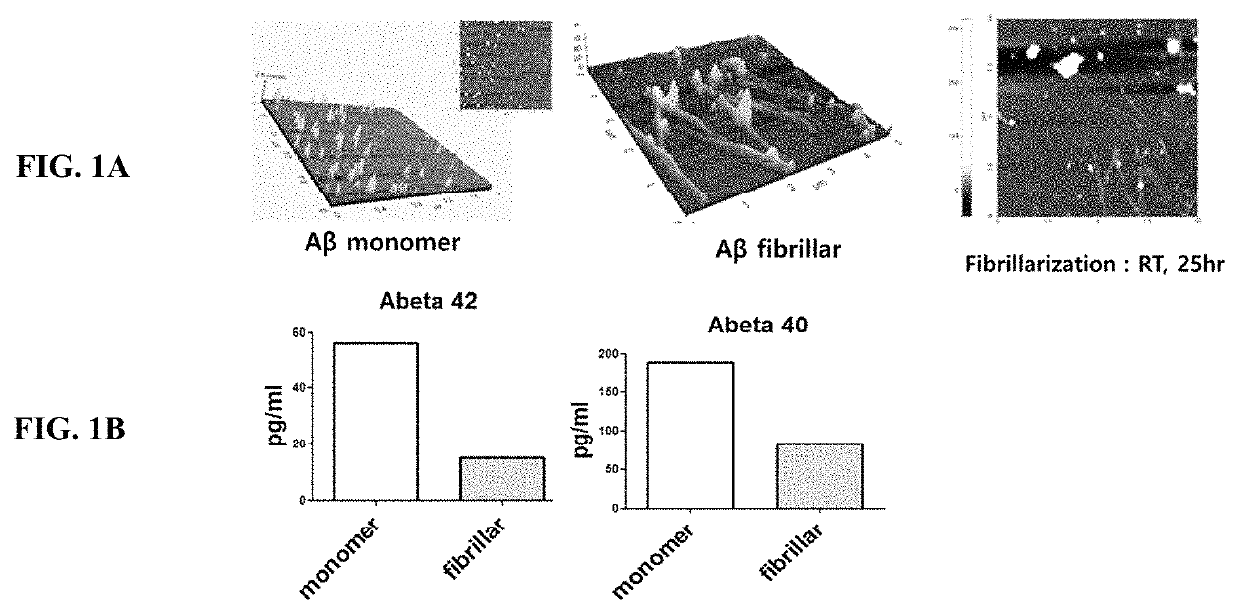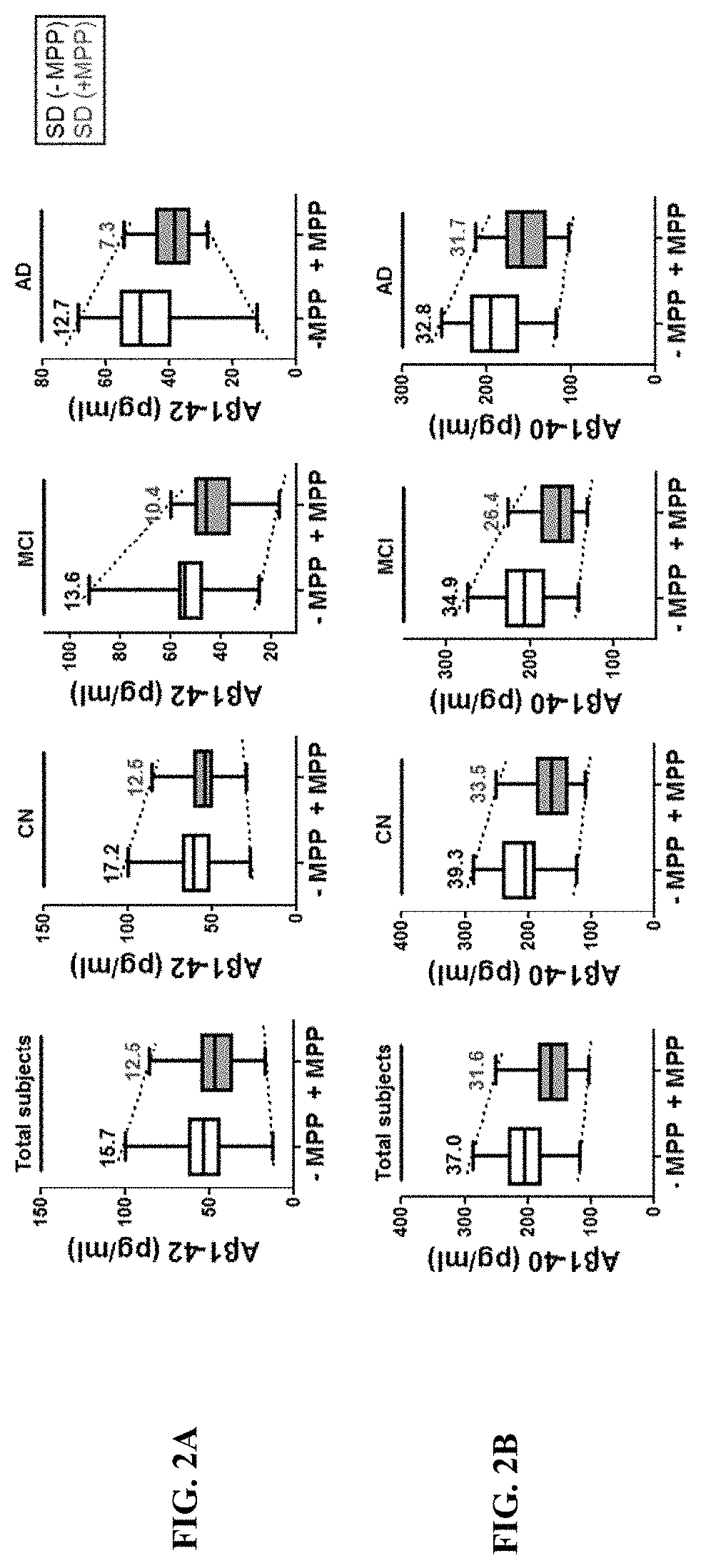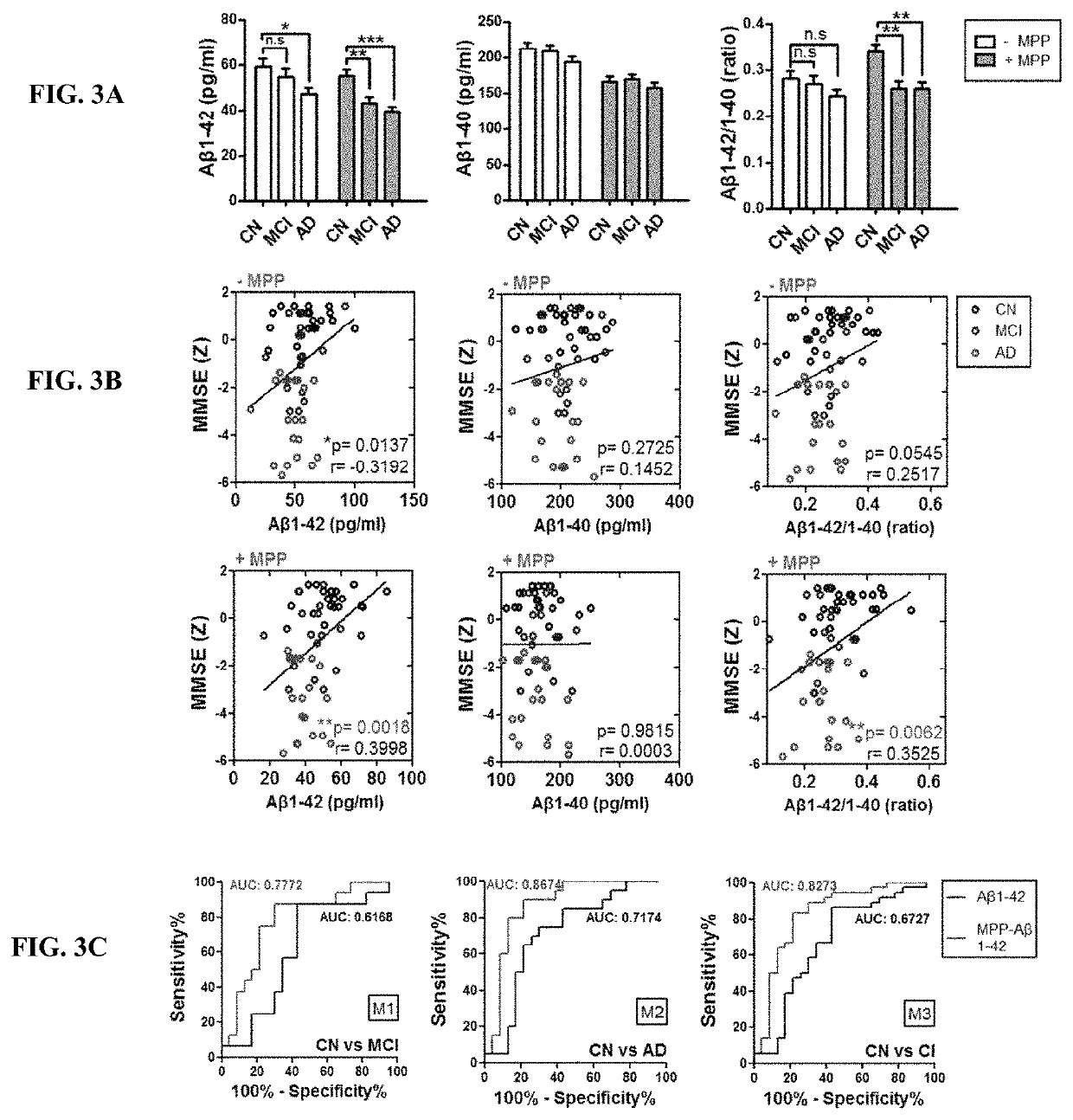Method for clinically and pathologically monitoring Alzheimer's disease through concentration of amyloidbeta in plasma
a technology of amyloidbeta and plasma, which is applied in the field of clinically and pathologically monitoring alzheimer's disease through plasma amyloidbeta concentration, can solve the problems of inaccurate diagnosis methods, inconvenient use of current methods, and malfunction of the brain
- Summary
- Abstract
- Description
- Claims
- Application Information
AI Technical Summary
Benefits of technology
Problems solved by technology
Method used
Image
Examples
examples
Comparison of the Detectability of Aβ Depending on the Types of its Forms: Monomeric and Aggregated Fibrillary Form
[0044]To determine how accurately the actual concentration of the Aβ depending on its monomer and fibrillar form in vitro, the known amount of each of Aβ forms prepared as described below was compared to the concentration measured by the conventional methods as described below. Specifically, the Aβ peptides were purchased from Bachem Americas, Inc. (Torrance, Calif., USA) and prepared in accordance with the manufacturer's guidelines. To prepare Aβ monomers, Aβ peptides were dissolved in DMSO and lyophilized by Speed-vac (Thermo savant, Bartlesville, USA). The fibrillar Ms were prepared by the incubation of Aβ monomers for 24 hours at room temperature. Protease inhibitor cocktail, serine protease inhibitor (PMSF), and human serum albumin (HSA) were purchased from Sigma Aldrich (CA, USA), Phosphatase inhibitor cocktail I (Lot #D1151) was purchased from A.G. Scientific In...
PUM
 Login to View More
Login to View More Abstract
Description
Claims
Application Information
 Login to View More
Login to View More - R&D
- Intellectual Property
- Life Sciences
- Materials
- Tech Scout
- Unparalleled Data Quality
- Higher Quality Content
- 60% Fewer Hallucinations
Browse by: Latest US Patents, China's latest patents, Technical Efficacy Thesaurus, Application Domain, Technology Topic, Popular Technical Reports.
© 2025 PatSnap. All rights reserved.Legal|Privacy policy|Modern Slavery Act Transparency Statement|Sitemap|About US| Contact US: help@patsnap.com



